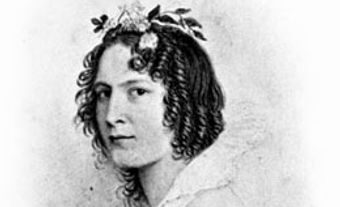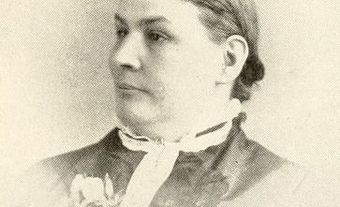Faith Fyles, botanist, botanical artist (born 30 September 1875 in Cowansville, QC; died 22 October 1961 in Ottawa). Fyles was the first woman hired to the position of assistant botanist by the federal Department of Agriculture (now Agriculture and Agri-Food Canada). In 1919, she became the department’s first botanical artist, male or female.

Early Life
Faith Fyles was born on 30 September 1875 in Cowansville, Quebec. She was the seventh of 10 children born to Reverend Dr. Thomas Fyles and his wife, Mary. Dr. Fyles, an Anglican clergyman, had earlier immigrated to Canada from England. He was also an amateur entomologist and botanist whom Fyles often accompanied on field trips. As well, her father was an artist and encouraged Fyles’ artistic talent.
Education
From an early age, Faith Fyles excelled in school. She graduated from Compton Ladies College in 1896 with honours and the medal in botany. (Compton Ladies College, an all-girls boarding school in Compton, Quebec, was later known as King’s Hall.) She then attended McGill University in Montreal, on scholarship. There she studied botany under Carrie Derick, the first woman to be appointed a full professor in Canada. After graduating in 1900 with a Bachelor of Arts, she spent a year taking art classes and studying Quebec wildflowers with her father.
Teaching
Between graduating from McGill in 1900 and joining the Department of Agriculture in 1909, Faith Fyles taught school — one of the few occupations open to women at the time. She taught at the Dunham Ladies’ College in Dunham, Quebec, and later at the Bishop Strachan School in Toronto. At BSS Fyles taught botany.
Assistant Botanist
Before moving with her family to Hull (now Gatineau), Quebec, in 1909, Faith Fyles travelled for a year in Europe. In 1910, the Department of Agriculture (now Agriculture and Agri-Food Canada) hired Fyles as an assistant seed analyst. A seed analyst did routine, tedious work, testing seed samples for weed contamination and germination vigour — factors important in agricultural productivity. Because women were considered to be better at such detailed work, the positions were described as “women’s work.”
In August 1911, Fyles’ botanical training in university led to her appointment as the first woman assistant botanist at the Central Experimental Farm (CEF), part of the Department of Agriculture. Her appointment reflected a shift in the federal civil service toward hiring professionals (those with university degrees) over self-taught amateurs. Some speculated her hiring was also due, at age 36, to the unlikelihood of Fyles quitting due to marriage or children. As well, the salaries offered to women were much lower than men could earn in the public sphere. Fyles was put in charge of the Botanical Garden (part of the CEF Arboretum), the Herbarium, and the identification of plants sent to and collected by her branch. Outside work, she was an active member of the Ottawa Field-Naturalist Club, and she continued to paint.
Fyles also helped young aspiring botanists, such as Dr. Dorothy Swales (née Newton). Swales later became curator of the Macdonald College (McGill University) herbarium in the 1960s. As a young girl, Swales mentioned her trouble identifying some wildflowers to her brother, who worked at the CEF. He told Fyles, who offered to identify any plants Swales sent to her. Swales also later described a visit Fyles made to Swales’ home in Plaisance, Quebec, writing that Fyles spent the day with her “in the fields and woods, explaining the flower parts and pointing out what to observe carefully.”
Principal Poisonous Plants of Canada
Faith Fyles was one of the Department of Agriculture’s few female employees to travel for fieldwork, an activity not considered safe or proper for women. For example, in 1914, she toured western Canada collecting and preparing poisonous weeds for the department’s herbarium. From this fieldwork, she wrote and illustrated Principal Poisonous Plants of Canada. The booklet, published in 1920, was the best-known of Fyles’ six publications. It reflected the CEF’s mandate to aid farmers and fruit growers by publishing free guides and instruction manuals that focussed on practical knowledge. Fyles’ poisonous plant booklet provided an easy-to-use guide for identifying and eradicating poisonous weeds that could sicken or kill horses and livestock. Of cursed crowfoot (Ranunculus sceleratus), for example, Fyles described the leaves as “rounded or heart-shaped, three lobed and toothed,” and noted that “any small portion of the leaf or flower, if eaten, will cause severe pain and serious inflammation.” Noting the plant’s French name — Mort au vaches — Fyles wrote that the buttercups “are considered especially dangerous to cows.”

The booklet also had an impact outside the agricultural community. A 7 July 1928 article in The Winnipeg Tribune, for example, reported that Principal Poisonous Plants of Canada, then available for 25 cents, “should be in the camp library of every scoutmaster.” The article also described Fyles as “Canada’s leading artist-botanist.”
Fyles illustrated the booklet with a combination of watercolours, black and white drawings, photographs of her watercolours, and photographs of actual plants. As well, she contributed eight miniature black and white illustrations of landscapes and plants.
Botanical Artist
In 1919, Faith Fyles transferred to the Division of Horticulture at the Central Experimental Farm as its first botanical artist. Before this, Fyles had been illustrating departmental publications in her spare time. Despite the prestige of being the first, the move from botanist to artist was in fact a demotion in terms of pay. Regardless, the position was an important one: colour photographs in publications did not replace black and white drawings, hand-painted lithographs and black and white photographs until the 1960s. In this position Fyles united art and science to produce highly praised, precise illustrations and hand-painted slides of the plants, fruits, flowers, and vegetables created by CEF hybridists such as Isabella Preston and William T. Macoun.

Painting in Retirement
Faith Fyles retired in 1931 due to poor health. In retirement she focussed on painting landscapes, plants, and flowers. Having exhibited her paintings as early as the 1920s, Fyles continued to do so into the 1950s. She participated in exhibitions held by the Art Association of Montreal, the Royal Canadian Academy of Arts, and private galleries. Lady Byng, wife of the Governor General, hired Fyles in 1926 to paint her Rideau Hall rock garden.

 Share on Facebook
Share on Facebook Share on X
Share on X Share by Email
Share by Email Share on Google Classroom
Share on Google Classroom



